Case Study: Student Progress in Meg Chinese Language Program
Monitoring student assessment data helps Meg improve our program. It gives us an indicator of whether students are making adequate improvement each year, allowing us to provide support where it is needed most.
The findings below illustrate the level of achievement for Meg students for an oral communication assessment. For this analysis, we randomly sampled a group of students from a number of schools in Australia, who have participated in the Meg program for up to 5 years doing 1 session a week. This analysis was conducted in order to get a preliminary understanding of what students can achieve after a number of years with the program.
Key findings after 1 term
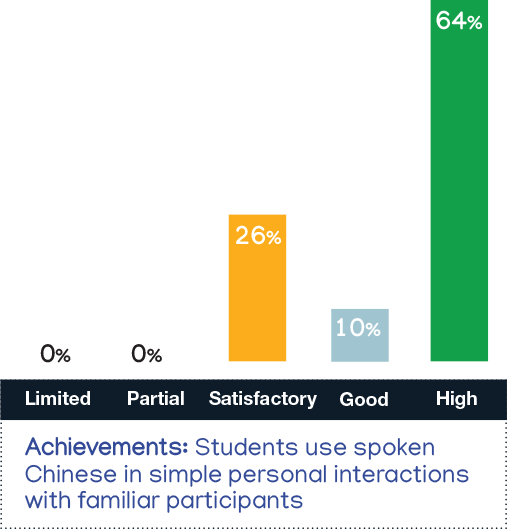
Band 3-4
All students were able to use spoken Chinese in simple personal interactions with familiar participants while 85% of students could use modelled questions to develop responses.
Students were asked to respond to questions like:
‘how are you?’
‘what colour is this?
你(nǐ)好(hǎo)吗(ma)
这(zhè)是(shì)什(shén)么(me)颜(yán)色

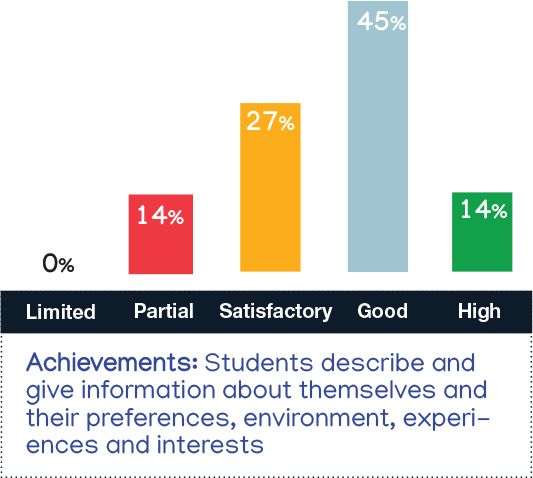
Band 5-6
86% of students were able to describe and give information about themselves and their preferences while 81% of students were able to translate everyday expressions and use context to assist with interpretation.
Students were asked to respond to questions like:
‘what country are you from?
‘where do you live?’
你(nǐ)是(shì)哪(nǎ)国(guó)人(rén)
你(nǐ)住(zhù)在(zài)哪(nǎ)儿(er)
‘can you translate this passage for me’
我(wǒ)是(shì)中(zhōng)国(guó)人(rén),
我(wǒ)的(de)爷(yé)爷,(ye)是(shì)中(zhōng)国(guó)人(rén),
我(wǒ)的(de)爷(yé)爷(ye)很(hěn)高(gāo)

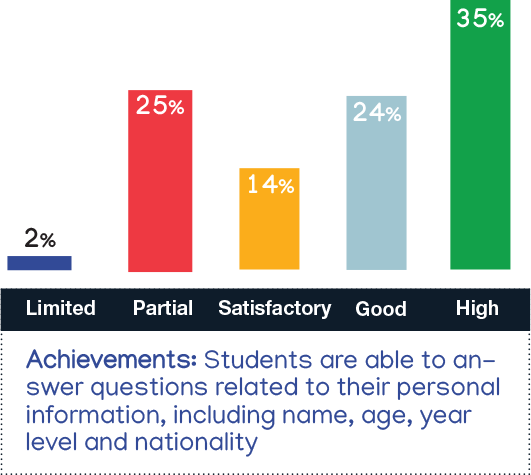
Band 7-8
73% of students were able to answer questions related to their personal infor- mation, including name, age, year level and nationality; while 83% were able to sound out vowel combinations in pinyin.
Students were asked to respond to questions like
‘how old are you?’
‘which grade are you in?’
‘what country are you from?’
你(nǐ)多(duō)大(dà)
你(nǐ)上(shàng)几(jǐ)年(nián)级(jí)
你(nǐ)是(shì)哪(nǎ)国(guó)
人(rén)
They also needed to say in Chinese the numbers that were presented to them and show the hand gestures representing them, as well as pronouncing vowel combinations.
Key findings after 4 years of learning
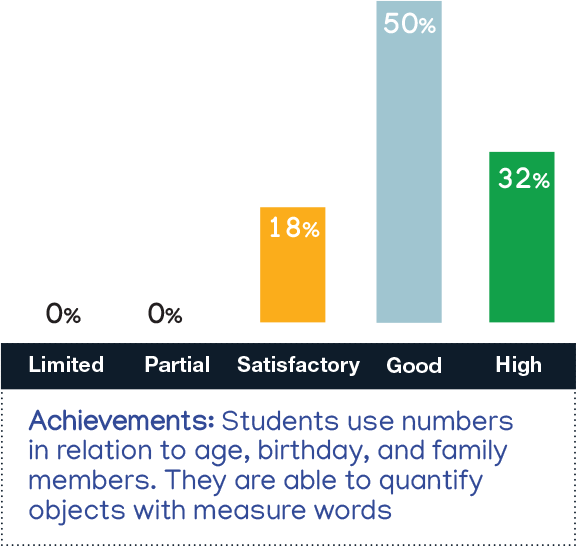
Band 3-4
All students were able to use numbers to describe age, birthdays, as well as family members. They were also able to successfully quantify using measure words while 93% of students successfully responded to and created informative texts.
Key findings after 5 years of learning
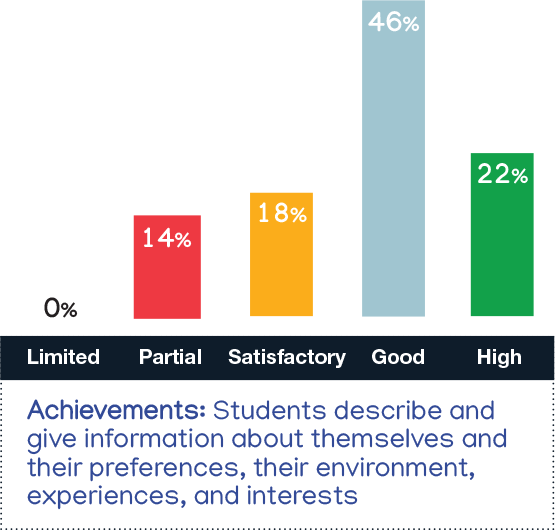
Band 5-6
86% of students could describe and give information about themselves, their preferences, environment, experiences, and interests while 80% of students could effectively translate everyday expressions and use context to assist with interpretation.




